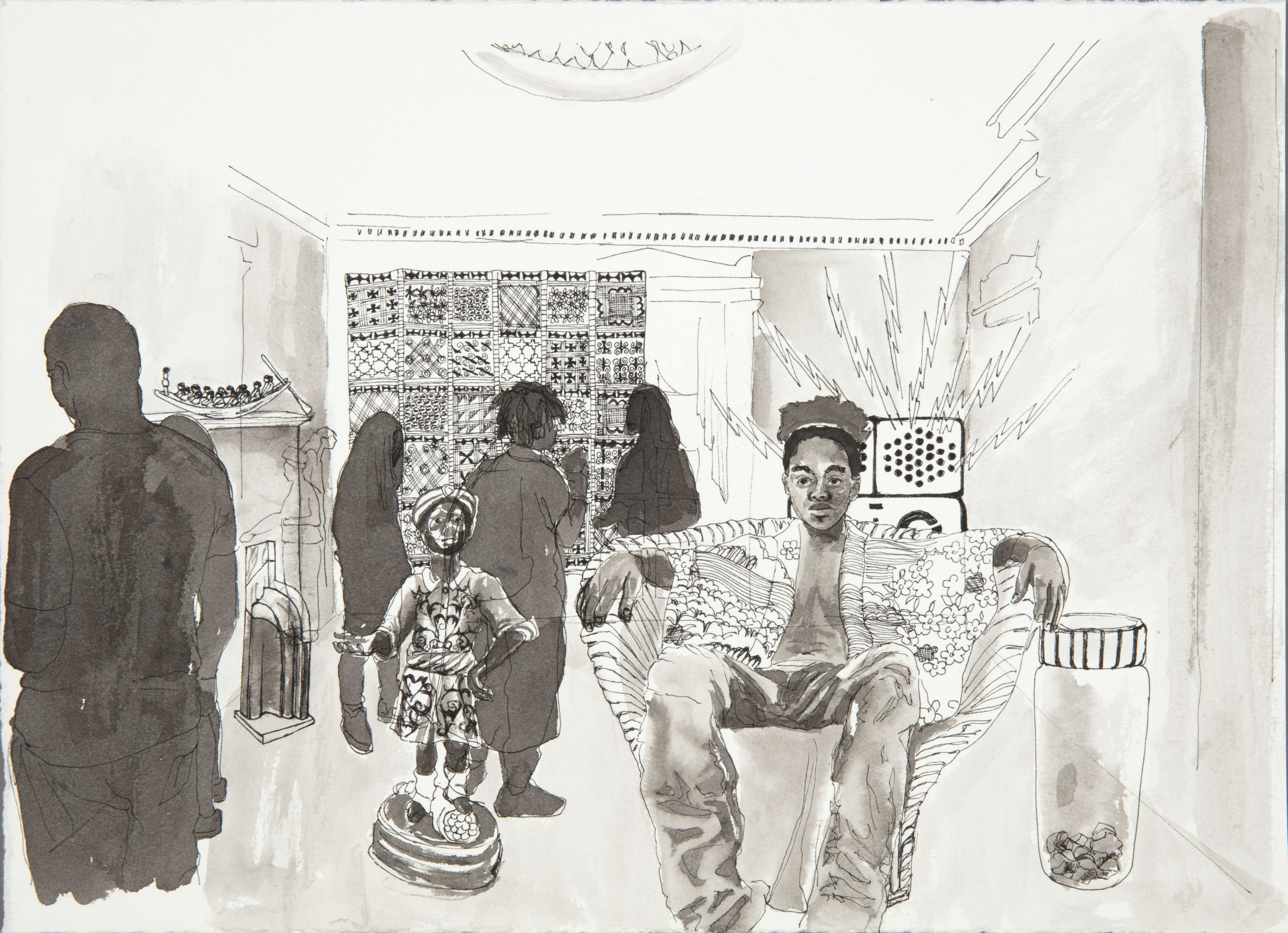Written by Carolyn Herrera-Perez
After a massive tsunami left Manhattan and most of the United States under water, waves of political, social, racial, and class unrest erupted. The year is 2077 when the exhibition Jon Gray of Ghetto Gastro Selects begins its Afrofuturist tale. Tasked by the flourishing African Assembly, which was founded in 2033, a young explorer named àlá searches underwater ruins of cultural institutions, including Cooper Hewitt, to recover and reunite artifacts with the African continent.
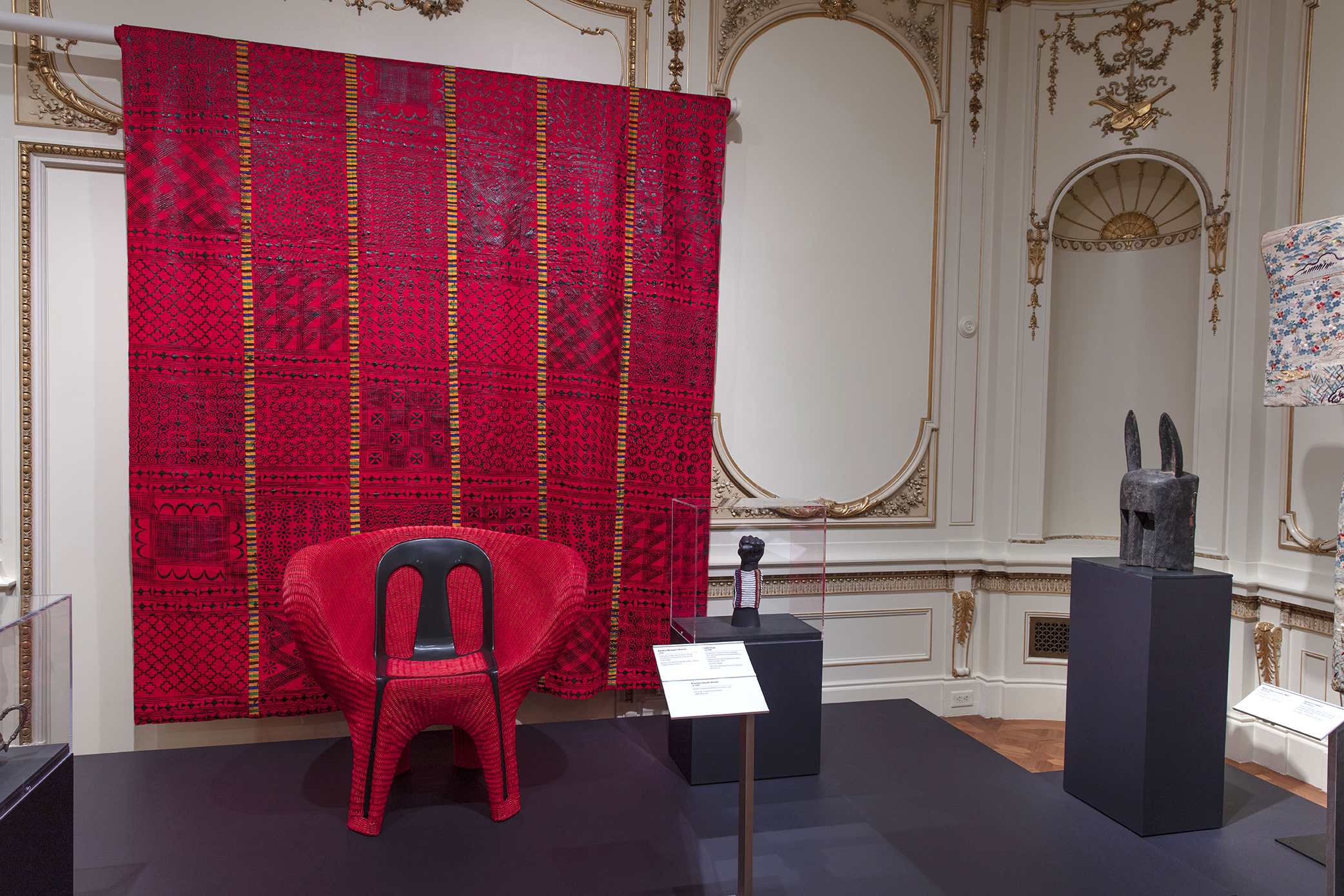
Installation photography of Jon Gray for Ghetto Gastro Selects.
The first exhibition that centers a fictional narrative at Cooper Hewitt, Jon Gray of Ghetto Gastro Selects is the 19th installation in the Selects Series that invites designers, artists, architects, and public figures to explore and interpret Cooper Hewitt’s collection of more than 215,000 objects. Jon Gray, the cofounder of the creative collective and cooking advocacy group Ghetto Gastro, has carefully furnished àlá’s lab, choosing their discoveries that span time periods, cultures, and mediums. Remixing original histories and uses, the collection becomes a launching pad to tell àlá’s story. Contained in the explorer’s go-bag, a myriad of objects become their tools for exploration: an 18th-century barbed spearhead is used for protection, French mother-of-pearl opera glasses become opulent binoculars for adventure, and a limited-edition Olympus Pocket Camera from the 1980s documents their journey. To better understand àlá’s mission, artworks by Oasa DuVerney illustrate the adventurer’s rituals, journeys, and interactions with the objects throughout the gallery.
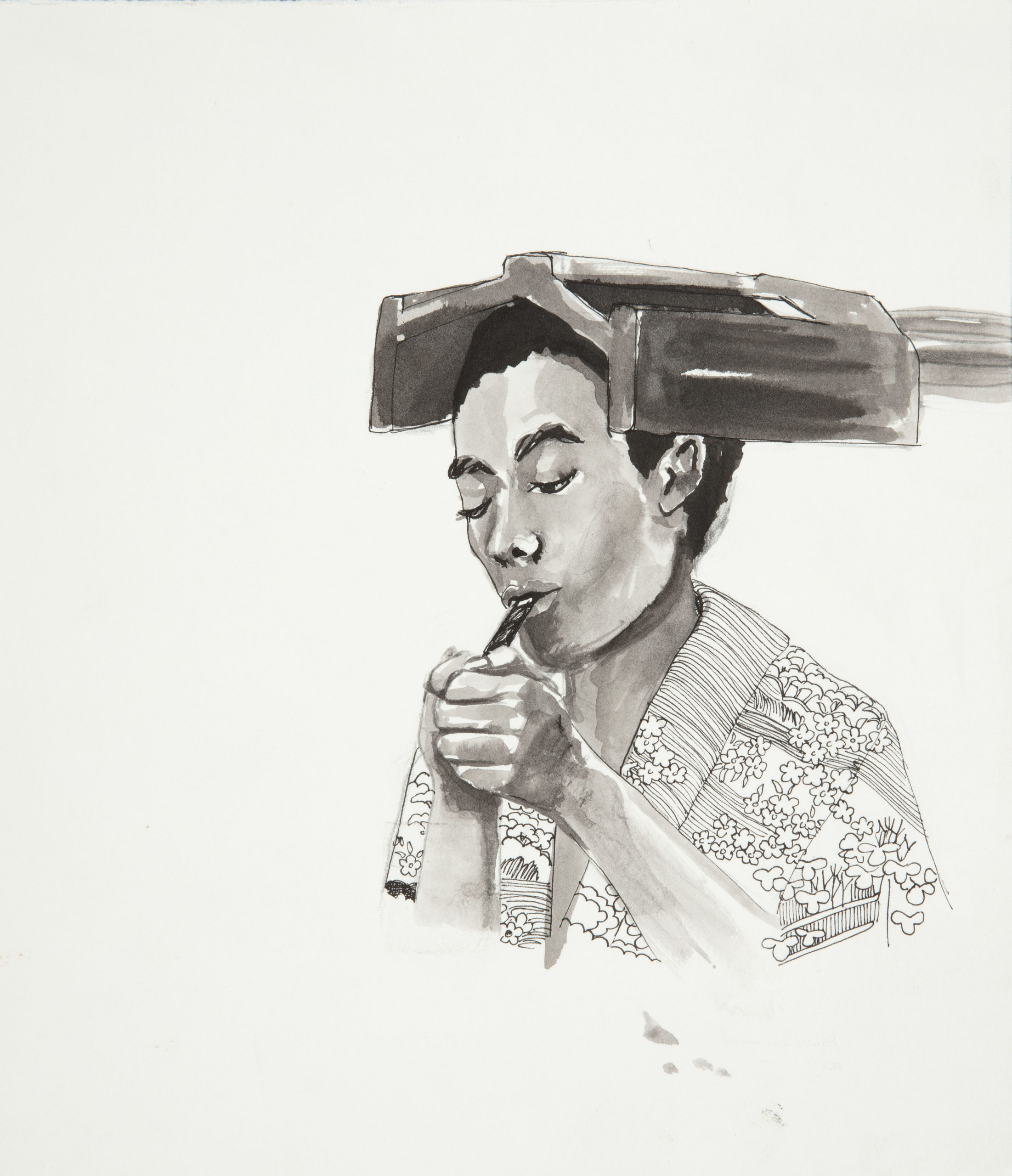
RITUALS ARE POWER “Preparing for each mission requires the right frame of mind and the right tools. I surround myself in ancestral cloth, sit comfortably, and drink tea. I remove my pipe from its case, pack it with omi-simi herb, and give thanks for this odd plant’s gift that provides me the power to breathe underwater.” Drawing, “álà Lighting Up,” 2020; Oasa DuVerney; Ink on paper; 10 x 9 in.; Courtesy of the artist.
In one of DuVerney’s panels, titled Rituals Are Power, we learn that àlá prepares for their underwater missions by becoming mindful, connecting with ancestors, and partaking in the ritual of the omi-simi herb, which enables àlá to breathe underwater. Combining history, fantasy, and the speculative to explore the Black experience, àlá’s tale is interconnected with Afrofuturism. Since its start in literature, like that of authors Octavia Butler and Samuel R. Delany, Afrofuturism’s roots have extended from science fiction and fantasy towards movies, music, visual art, and now exhibition design. Using a speculative narrative, Afrofuturism often introduces issues that affect our present reality, but unlike science fiction stories that describe a discouraging dystopian future, Afrofuturism can leave one hopeful for what is to come.
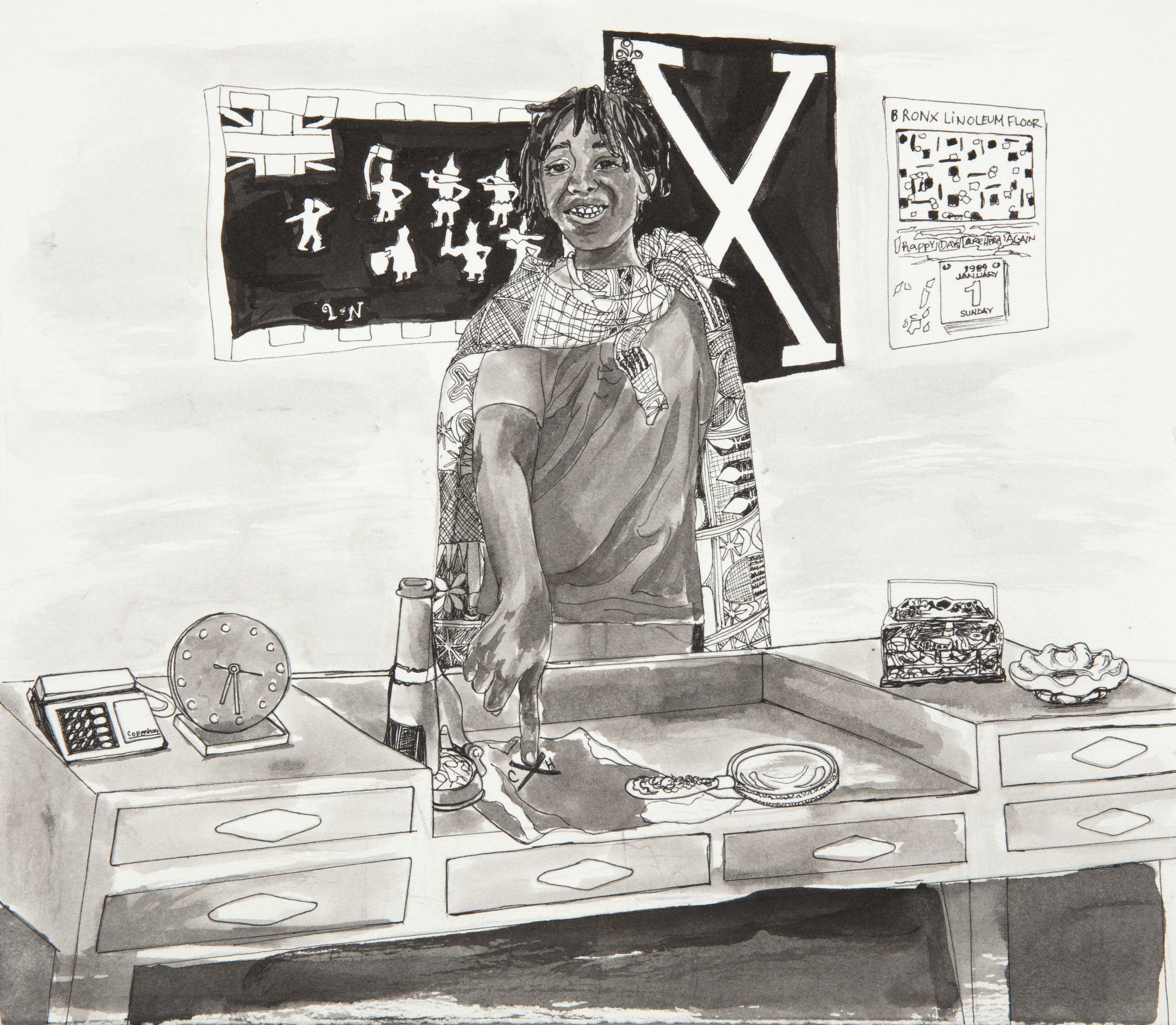
HISTORICAL RECORDS ARE REFUGE “My study space is well-appointed and filled with the random things I’ve collected over time. Every mission reveals a new layer of history—some more familiar than others. It’s here, surrounded by these items, that I analyze each trip’s findings. Each objects has its own story. Some of them feel like they contain so much meaning that they live and breathe the same way I do.” Drawing, “X Marks the Spot,” 2020; Oasa DuVerney; Ink on paper; 9 x 10 in.; Courtesy of the artist.
As àlá furnishes their lab with international and historical artifacts, their personal taste and mission creates an expansive collection of material culture. These pieces have never been presented together in an exhibition context before, but the items now fit together thanks to àlá’s character. To suit their needs and style, a sculptural 1960s Italian radio system furnishes the lab with a luxurious Jean-Michel Frank writing desk finished with shagreen—a rawhide of untanned sharkskin—used for its decorative qualities. àlá’s most cherished pieces are their discoveries that center Black histories, Black cultures, and Black lives; these relics range from an Egyptian Boat of the Dead from 2000–1700 BCE, a Dogon mask bound with rituals surrounding death, a poster of Spike Lee’s film, Malcolm X by Art Sims, and South African beaded bracelets that are thoughtfully positioned upon a model of the Black Power fist.
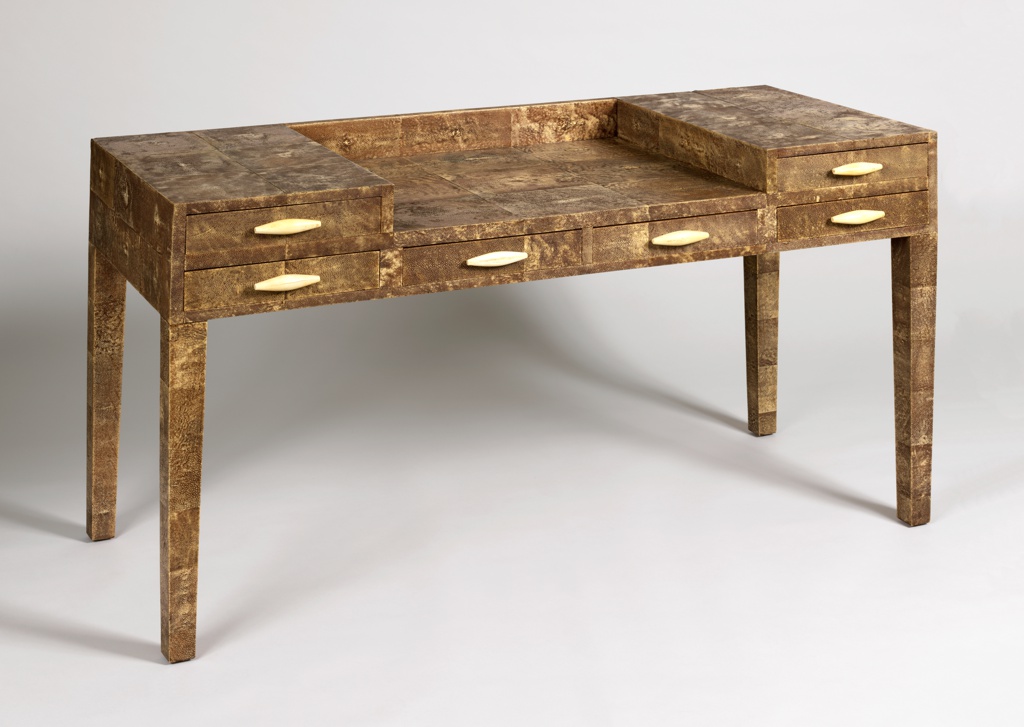
Desk; Designed by Jean-Michel Frank (French, 1895–1941); wood, shagreen, ivory; H x W x D: 80.8 x 142 x 60 cm (31 13/16 x 55 7/8 x 23 5/8 in.); Gift of Mr. and Mrs. Forsythe Sherfesee; 1968-144-13-a/g
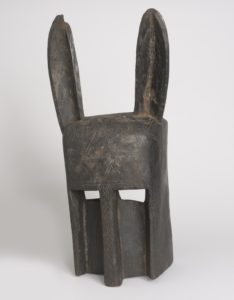
Mask (Dogon culture, Mali), 19th century; Carved wood; Gift of Bernard Richter, 1965-55-30; Photo: Matt Flynn © Smithsonian Institution
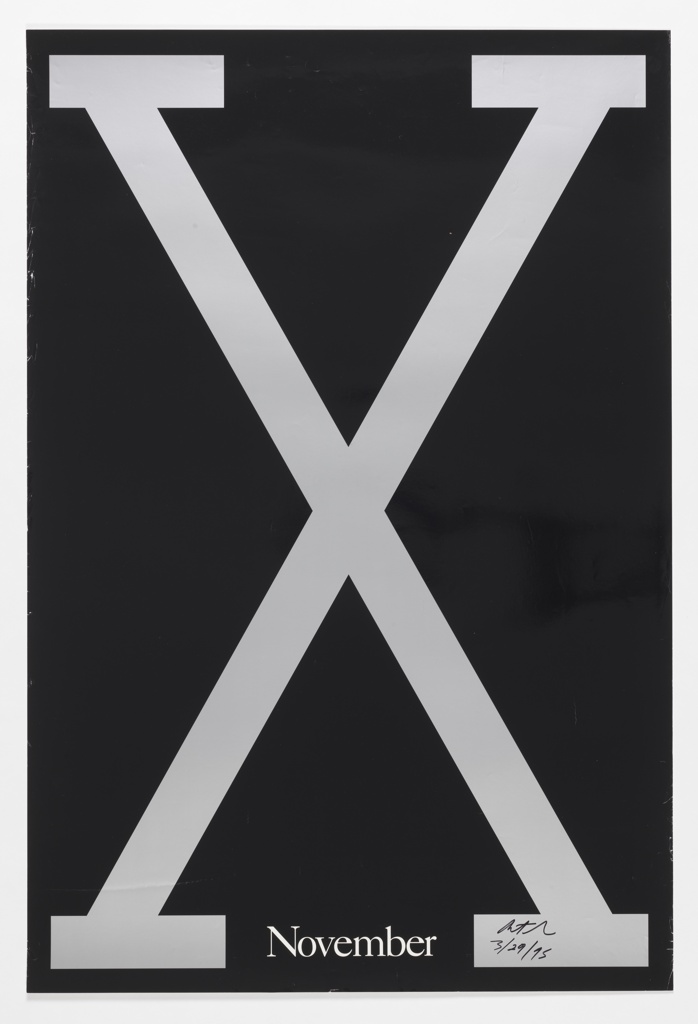
Poster, Malcolm X, 1992; Designed by Art Sims (American, born 1954); Offset lithograph on paper; Gift of Art Sims, 1996-92-9; Photo: Matt Flynn © Smithsonian Institution
Through àlá’s story, objects usually seen as dissimilar are gracefully placed together for the first time. Informed by the past, but representing the future, Jon Gray of Ghetto Gastro Selects offers an opportunity to experience Cooper Hewitt’s collection through àlá’s vision.
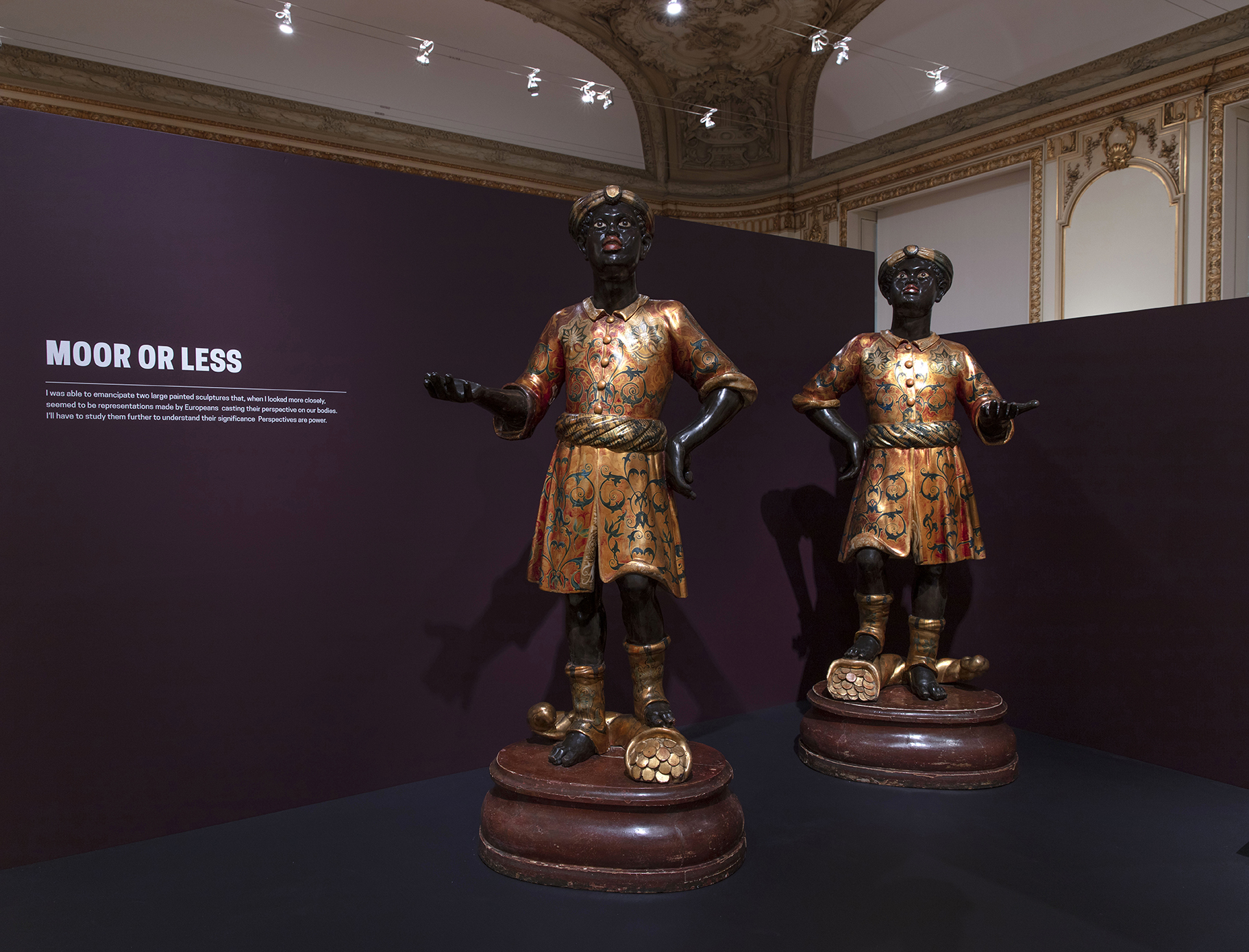
Installation view of Jon Gray for Ghetto Gastro Selects.
Carolyn Herrera-Perez is a freelance writer and researcher. Previously, she was a Curatorial Fellow at Cooper Hewitt, Smithsonian Design Museum.
Jon Gray of Ghetto Gastro Selects is on view at Cooper Hewitt through February 13, 2022.
